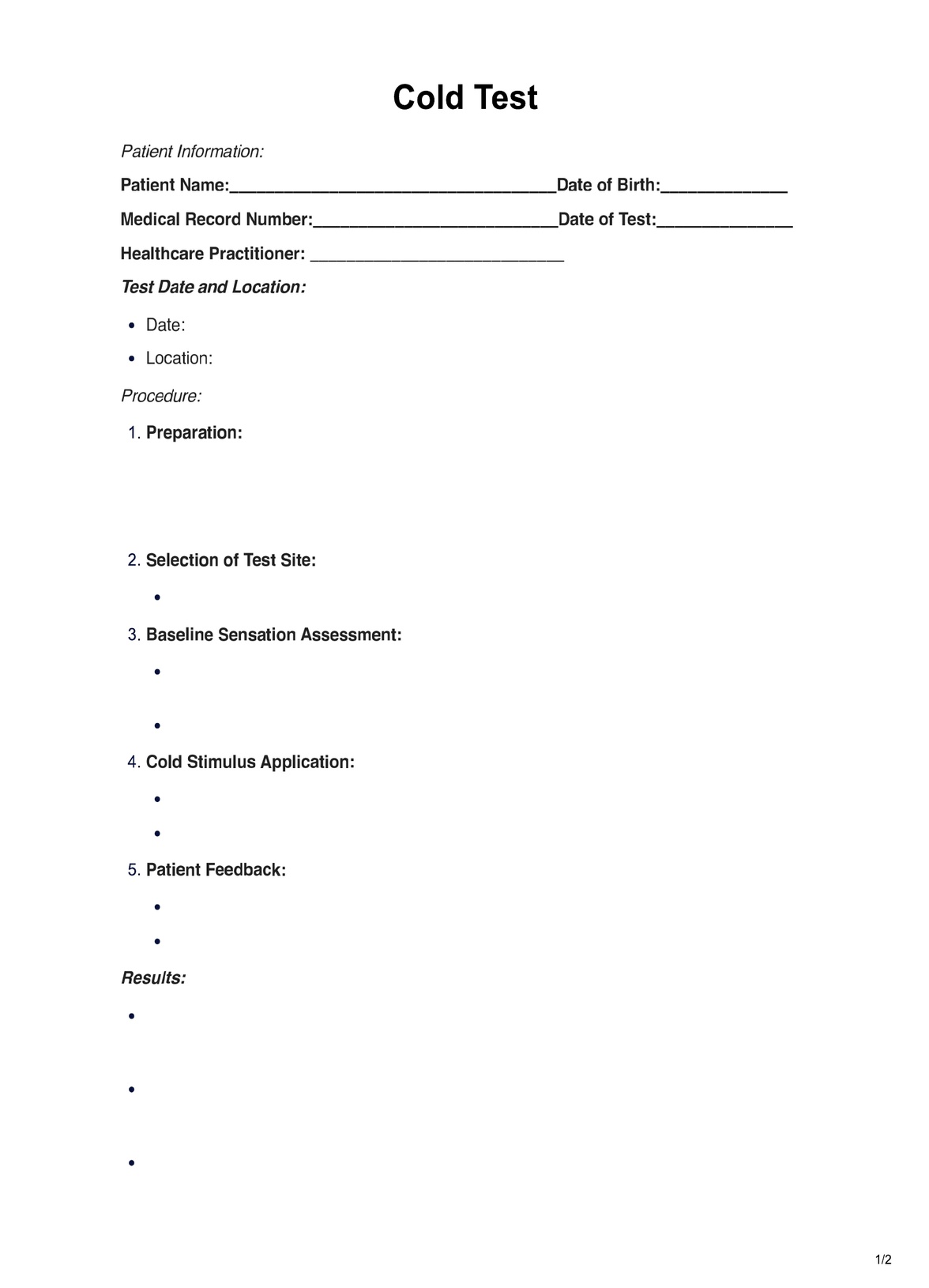Cold Tests are performed to evaluate and diagnose conditions such as neuropathy, vascular disorders, Raynaud's disease, and autonomic nervous system dysfunction by assessing the patient's response to temperature changes.

Cold
Ensure your health with a comprehensive Cold Test – the key to early detection and prevention. Trust us for healthcare excellence.
Use Template
Cold Template
Commonly asked questions
Common test sites include the fingers, toes, and forearms. However, the specific site may vary depending on the patient's symptoms and the clinical question being addressed.
Results can vary, but a normal response suggests that sensory and vascular function in the tested area are within the expected range. Abnormal responses may indicate neuropathy, vascular issues, or nerve damage.
EHR and practice management software
Get started for free
*No credit card required
Free
$0/usd
Unlimited clients
Telehealth
1GB of storage
Client portal text
Automated billing and online payments











